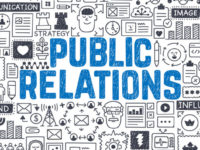Medianet recently released their 2024 Australian Media Landscape Report which takes a deep dive into the world of media, detailing unique insights and challenges of the industry. Whilst most of the report focusses on workplace conditions, threats and concerns, there were some juicy insights that provide clear takeaways for small businesses.
If you are new (or not so new) to the world of PR and want to explore securing media exposure for your brand, here are my ‘Top Four’ findings along with key takeaways and tips for you to apply to your pitching efforts in 2024.
Finding: ‘Informing the public’ was the top factor driving journalists to cover stories in 2023 (80 per cent), followed by raising awareness for issues and entertaining audiences/providing enjoyment.
Key Takeaway: Trying to get exposure for your product or service will always largely be considered as advertorial, not editorial – unless you package it up smartly. Journalists are looking for how you can add value to their community – what unique information, insight or education you can provide to make their readers, viewers or listeners make better decisions or more informed choices.
Pro Tip: Always ask the question, “What value can I provide to the reader?” before reaching out to the media, and lead with that in your pitch. Generally speaking, a CTA (call-to-action) will always result from exposure – whether it’s a hyperlink to your website, socials or reference to your business name.
Finding: Industry and professional contacts remained the top story source for journalists (used by 86 per cent of respondents in 2023).
Key Takeaway: This is where the power of using a PR contractor or agency can come into play as many have existing connections or contacts. For those that are not yet at the stage of being able to consider engaging a PR professional, take the time to research and form a connection with relevant editors or journalists before reaching out.
Pro Tip: Yes, the big PR agencies charge big dollars – but there are a plenty of smaller bespoke agencies and contractors that offer cost-effective PR solutions. Take the time to do some research – you may be pleasantly surprised. It could be a minimal investment with a long-lasting impact.
Finding: Press releases were the second-most used story source for respondents.
Key Takeaway: The traditional method of drafting up and distributing a Media Release to mass media is slowly starting to lose its effectiveness. Whilst the take-up is still highly impressive (a whopping 81 per cent), journalists tend to react strongly to personalised pitches direct from industry and professional contacts as outlined above.
Pro Tip: Where possible, reach out personally to individual editors and journalists. Media Releases are still effective but note that 70 per cent of journalists read less than the first paragraph. The first few sentences in your email need to be punchy.
Finding: 47 per cent of survey respondents said they were less likely to cover a story that had already been covered .
Key Takeaway: A blanket PR approach to the masses doesn’t cut the mustard, nor is pitching a story that has already been covered by another outlet.
Pro-tip: Offer exclusives, or at the very least, allow for a response time before offering the same story to another media target.
There is no doubt about it, PR can be an absolute gamechanger particularly when it comes to small business. For those wanting to have a go at managing it themselves, a little planning and preparation is the key. Take the time to research your target, form a connection, identify the most appropriate angle to pitch (keeping in mind the outlet’s audience) and reach out with a personalised pitch over a standard media release where possible.










